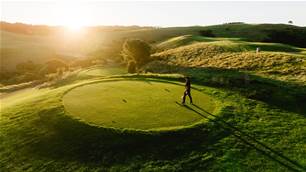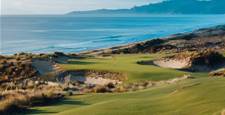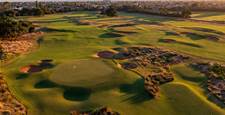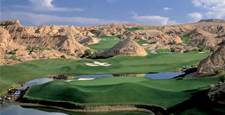There’s something right – elemental, even, if you pardon the pun – to golf by the sea.
The 133-metre 4th is a short par-3, but working back uphill to a narrowing green from front to back, with small bunkers flanking either side. The worst danger here is long – catch a short-iron too pure here and it may end up not too far from the beach, rolling down the hill not too far from the back of the green. From there heading to the 5th and 6h holes, the golfer comes closest to the coast, and players will no doubt linger on the tee box to stare out at the beach and the heads.
The drive off the 5th is blind, compounding the looming presence of out-of-bounds left. The best line from the fairway is down the left, as the approach is influenced by a deep swale fronting the green, with another big greenside bunker on the right.
The 6th is the hole that draws the visitors in, worth the green fee by itself. Unlike the blind 5th, the elevated tee here brings the scrub all the way down the left-side boundary into full view, with the ribbon of the fairway spooling out below. At 337 metres, the play is less than driver – the fairway drops steeply about 100 metres out, with a pond, out of view from the tee, likely to catch any big hitter getting greedy. The green is perched atop a slope, with a sharp right-to-left pitch, placing the premium on accuracy to the last shot.
The 7th starts players off on the parkland-like portion of the course, with a series of holes working back up and down a gentle slope, largely free of fairway bunkering but defined by the strands of pines and spots of ti-tree. The long, two-shotters at the 10th – the table-like, two-tiered green is a standout feature here – 11th and 13th are the tests here, while the 401-metre 14th is a short par-5 and a scoring chance that punctuates this run of holes.
The 15th runs back alongside the 6th, thus sharing the best piece of terrain on the course right below the clubhouse. Like its counterpart, it’s another rolling, short par-4 which will tempt a golfer to blast away from the elevated tee, looking out to the hole below, but is much better off making the precise play down the left-side line of the fairway. The green is set into the side of the slope that runs from the clubhouse to the beach, neatly framing the short-iron approach in – the threat of the front bunker and the presence of the back slope no doubt sends many long, as it did to your correspondent.
The 15th has been better known in the past as Shelly Beach’s (or perhaps Tuggerah Lakes’) 16th, and will eventually become that again. This part of the layout has come in for significant works, as the renovation of the clubhouse forced a change to the old par-3 9th below next to the clubhouse, and a temporary par-3 16th added on the site of the club’s old range. The new 9th is taking shape in this space, and will be a strong par-3 of 160-plus metres that will add to the variety of the course’s one-shotters.
The playing surfaces at Shelly Beach come in for particular notice. The magazine’s visit to the course came only weeks after heavy rains flooded out areas across the layout. However, there wasn’t a hint of that to be found in the fairways, with the drainage qualities of the the course’s sandy loam base plainly one of its great attributes. The greens were also superb, with a true, quick roll accentuating the more interesting putting challenges across the course.
Related Articles
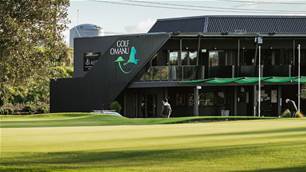
International Spotlight: Omanu Golf Club
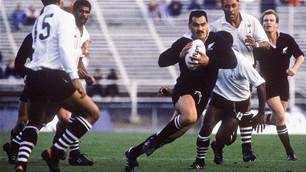
Celebrity Kiwi couple tee off in paradise
